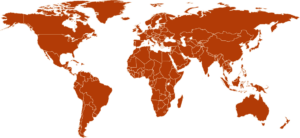
Persson U, Geoffard P-Y, Möller J, Brådvik G
An analysis of behaviour, health, and GDP during the Covid-19 pandemic in Europe
Following the Covid-19 pandemic in 2020 — 2022, decision makers in Europe imposed nonpharmaceutical interventions (NPIs) to reduce the physical interaction of individuals across the continent. The aim was to reduce the spread of disease; however, the interventions and the behavioral changes also came at a cost, both in terms of quality of life and production losses.
Now when we can look at the pandemic in the rearview mirror, the evidence and knowledge about the effects of Covid-19 are better. This enables us to properly analyse the behavioral changes, the economic costs, and health during the pandemic. Such analyses increase our understanding of the potential trade-offs between benefits and consequences of interventions during future pandemics and better prepare for a future pandemic.
The overall purpose of our research is to use real world data to analyse individuals’ behaviour, health and gross domestic product (GDP) during the Covid-19 pandemic in Europe. Our report is based on official data for the European Economic Area (EEA) on an aggregated, macro level during 2020 — 2022.
During the Covid-19 pandemic, we registered an increased excess mortality, a decreased physical interaction, a reduction in health-related quality of life, and GDP-losses. We were however unable to establish a significant negative relationship between NPIs and excess mortality.
Sweden had the lowest excess mortality in the EEA. This may seem remarkable as Sweden for a long period was the country with the least strict NPIs and the smallest reduction in physical interaction of all the EEA countries.
One explanation for this unexpected result might be that NPIs, such as closed borders, travel bans, school closures, and workplace closures, may have been effective under ideal conditions, provided a perfect, or at least a high degree of, compliance. As is shown in our analysis, these ideal conditions did not exist in reality on the population level.
These health and economic costs enlighten the need for pharmaceutical interventions, i.e. vaccines, as an effective intervention to contain a pandemic. A rapid development of vaccines with a high uptake among the population can increase the physical interaction and thereby potentially save substantial production losses and quality of life losses. To justify the costs of imposing extensive NPIs and the following behavioural changes as a public health policy during future pandemic, clear health benefits must be demonstrated as a result of these interventions.
Read more from IHE about Covid-19
IHE REPORT 2025:1, IHE: Lund, Sweden
